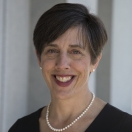
Yesterday, we observed National HIV & Aging Awareness Day. People aged 50 years and older comprise 42% of all persons living with diagnosed HIV infection and about one in six new HIV diagnoses. As noted in CDC’s updated fact sheet, people aged 50 and older have the same HIV risk factors as younger people, but may be less aware of their HIV risk factors. They are also more likely to be diagnosed with HIV infection later in the course of their disease.
Last week, during a session at the U.S. Conference on AIDS, I was asked about how the National HIV/AIDS Strategy applies to older persons. Both the National HIV/AIDS Strategy and Federal Action Plan highlight the need for HIV education across the age spectrum. In addition to education, routine testing for those aged 15 to 65 years, as recommended by USPSTF, should be fully implemented; screening after age 65 years is indicated if there is ongoing risk for HIV infection (e.g., new sex partners). And the HHS Office on Women’s Health is conducting a systematic review of the literature to develop strategies for improving the lives of women aged 40 and above living with HIV/AIDS.
With an increasing number of people with HIV living longer, providers must be able to meet their patients’ health care needs related to HIV as well as aging. The Federal Action Plan includes a commitment by NIH to support ongoing studies to inform outcomes along the continuum of care, including health and service needs for older Americans. As a growing segment of the population of persons living with HIV, it is important that we address the unique challenges for HIV prevention and care for persons aged 50 and older.


